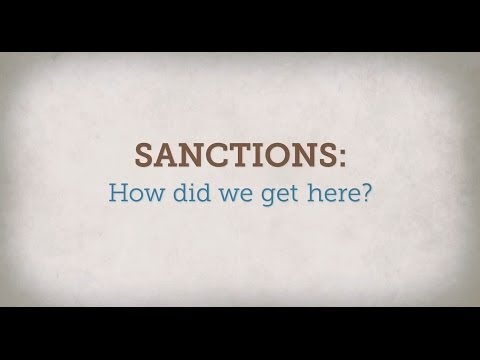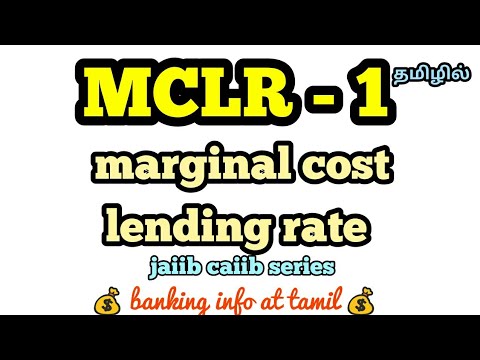Contents
Trading in ETFs is a less expensive affair as compared to trading in mutual funds or even index funds. Most ETFs are passively managed funds, and hence the expense ratio is quite low. Also unlike mutual funds, ETFs do not have any additional charges like entry or exit load. This significantly reduces the expenses to invest in an ETF ultimately benefiting the investors. Demat Account is an account that holds the investors securities such as shares, debentures, mutual fund, ETF’s etc. in a dematerialised or an electronic form. A buy transaction will result in a credit entry while a sell transaction leads to debit entry in a demat account.
ETFs rely on market makers and arbitrageurs to maintain liquidity so as to keep the price in line with the actual NAV. Alternatively, investors can follow the “Cash Subscription” route in which they can pay cash directly to the Fund for purchasing the underlying portfolio. We then calculated the average bid-ask spread for each ETF category at each point in the day.

Can easily be bought / sold like any other stock on the exchange through terminals across the country. The webinar will provide platform to enhance understanding of ETFs, their structure and areas related to investment in ETFs etc. We’ve partnered with Morningstar, the global leader in fund analytics, to give you information, ranking and star-ratings on every single mutual fund in India. Passive investments via Exchange Traded Funds have gained traction in recent years after being adopted by the Employee Provident Fund Organisation for its equity investments.
ETF one Click Portfolios
Therefore, At their center, ETFs are hybrid investment items, with a significant number of the investment highlights of shared funds wedded to the trading highlights of common stocks. Like a common fund, a financial specialist purchases shares in an ETF to possess a proportional interest in the pooled assets. Investors typically seek exposure to equity markets, but often need time to make investment decisions. ETFs provide a “Parking Place” for cash that is designated for equity investment. Because ETFs are liquid, investors can participate in the market while deciding where to invest the funds for the longer-term, thus avoiding potential opportunity costs. Historically, investors have relied heavily on derivatives to achieve temporary exposure.
ETFs usually have the same portfolio, i.e. securities in similar weights as the index it tracks and tries to replicate the performance of the underlying index like Sensex or NIFTY 50. Hence, ETF value moves up or down based on the values of underlying securities. In ETFs, the number of units issued are not limited and can be created / redeemed throughout the day.
The trading value of an ETF is based on the net asset value of the underlying stocks that an ETF represents. ETFs typically have higher daily liquidity and lower fees than mutual fund schemes, making them an attractive alternative for individual investors. ETFs orExchange Traded Funds are a passively managed investment option, which is similar to an index mutual fund or a single stock. They are referred to as a basket of stocks, bonds or commodities that track an index on the stock exchange. For instance, an ETF can reflect the composition of stocks in the Nifty Index or Sensex index.
1 What Is An ETF?
Typically, it is a large specialized institution like the Bank of Nova Scotia, Canada which acts as the custodian bank and holds equivalent physical gold to back these gold ETF units. That means that your gold ETFs are fully backed by physical gold in the vaults of the custodian bank. The spread may be influenced by the cost of assembling and trading the securities that make up an ETF. For example, if an ETF invests in foreign stocks, the cost of converting Canadian dollars to the underlying currencies will be higher. Insufficient trading volume with ETFs does not imply low liquidity, as it does with equities.
What is the difference between ETF and an index fund?
Ans: The main difference between an ETF and an index fund is that ETFs can be bought and sold during the day, while index funds can only be bought and sold at a set price at the end of the trading day.
These funds are not individual investments like stocks but a bunch of securities compiled together to form a fund but can be traded in the open market like shares or stocks. This is where they differ from mutual funds as mutual funds cannot be traded throughout the day on a real-time basis but after the completion of trading hours based on their value at the end of the day. ETFs are undeniably more diverse than stocks and are thusly, safer. Regularly a fund will put a portion of its funds into bonds—corporate and government debt instruments. They will scatter the pay got from these investments to investors subsequent to deducting costs.
For understanding the tax implications there are two separate classes of ETFs that you must focus on. Kindly update you email ID with us to receive contract notes / various contract notes electronically to avoid any further inconvenience. ETFs have lower capital gains and they are payable only upon sales of the ETF. Please note that by submitting the above mentioned details, you are authorizing us to Call/SMS you even though you may be registered under DND. Please note that by submitting the above-mentioned details, you are authorizing us to Call/SMS you even though you may be registered under DND. If you’re on the lookout for some ETF investing strategies to employ, here are some that can help you out.
This requires an in-depth analysis by the investor or the help of brokers having expert knowledge of the same. For example, if an investor has in-depth analyzed a particular asset or industry performance, he/she can invest in such asset or industry or can invest in the index to minimize https://1investing.in/ exposure. As it with Equity and Currency markets, even the Commodity segment is profoundly influenced by a constant string of global events. Our team of experts constantly assesses the global macroeconomic causal factors and attempt to create opportunities for the benefit of our clients.
Current & Historical NAV / Dividend
Depending on which website brokerage you used to open your account, you will have a variety of options. All you have to do is type in the correct symbol and the number of shares you want to buy. Set up an account with an online brokerage firm of your choice after doing your research and deciding which fund you wish to invest in. Any Grievances related the aforesaid brokerage scheme will not be entertained on exchange platform. We collect, retain, and use your contact information for legitimate business purposes only, to contact you and to provide you information & latest updates regarding our products & services. We do not sell or rent your contact information to third parties.
What accounts do I need to trade in ETF?
Investors need to have a demat account and a trading account to trade in ETF units.
There are varied hedging ideas from selective hedging, opportunistic hedging to inventory/exposure hedging. Commodities are ideal for asset allocation purposes as it improves overall return of a portfolio. It also helps hedge against inflation and buy a piece of global demand growth. Commodity Derivatives futures contracts are contracts to buy/sell specific quality/quantity of a particular commodity at a future date. Fund managers attempt, at all times, to eliminate or at least minimise this tracking error.
Trading in an ETF is just like buying or selling the Sensex Fund or any other Index Fund listed on the stock exchange. Since the Sensex Fund trades What ought to Petty Cash funds be used for like a stock, its price fluctuates during market hours. This is unlike a mutual fund, whose NAV, or price, is calculated at the end of the day.
Some of the features of investing through an ETF :
Diversify portfolio to an entire Index instead of Single stock. Methodology for calculating subscription and redemption price of units. QQQs – Popularly known as Cubes, they are listed on the NASDAQ and track the NASDAQ -100. With over a million members we constantly improve our services. No wealth tax, no security transaction tax, no VAT and no sales tax.

They can be actively or passively managed, as per company norms. Actively managed ETFs are operated by a portfolio manager, after carefully assessing the stock market conditions and undertaking a calculated risk by investing in the companies with high potential. Passively managed ETFs, on the other hand, follow the trends of specific market indices, only investing in those companies listed on the rising charts.
Essentially, an ETF is a tradable instrument that tracks an index, a commodity, bonds, or a basket of assets like an index fund. Secondly, bid-ask spreads on ETFs could widen adding to your risk, especially in the case of ETFs that are not too liquid or where adequate market support is lacking. Lastly, there is tracking error risk that your ETF may not precisely reflect the underlying index, which is what the ETF is supposed to do in the first place. Sector rotation ETF investing strategy involves picking the sectors that are currently in demand and doing well.
This section provides information on ETFs trading in India and global markets. Exchange Traded funds are sorted by region and then by country. Once you have located the ETF that interests you, clicking on the link brings up its price and chart. Historical data is also available for each ETF as is technical analysis. The AP sells those ETF shares to investors or market makers on an exchange. Nifty is a stock index that includes firms from a variety of industries, including banking and finance, technology, pharmaceuticals, automobiles, oil and gas, and much more.
- Hence, the only way the value of an ETF will become nil is if the value of each of the underlying security becomes zero.
- To begin with, when they get back from stocks in the area that has a thin dispersion around the mean, an ETF may be the most ideal decision.
- ETFs are closed ended and any purchase or sale only changes the ownership and does not change the basic corpus of the ETF.
- Passively managed ETFs, on the other hand, follow the trends of specific market indices, only investing in those companies listed on the rising charts.
- It’s tempting to think that an inverse ETF is equivalent to opening a short position on an ETF – the two do sound the same – but, there are some differences.
Unlike equity markets, a unique feature of the currency markets is that it is a 24 hour market. This is because business hours in various financial centers around the world overlap which makes it possible to trade currencies at virtually any time. This makes the currency market most liquid financial market in the world.

Secondly, there are gold ETFs indexed or benchmarked to the market price of gold, typically 24 carat gold. Like a stock, the volume represents the number of units of an ETF that trade on any given day, and it is impacted by investor activity. In the case of ETFs, however, the daily volume is sometimes misinterpreted as a measure of liquidity. Shorting an ETF is a great way to experience some returns in a market that’s on a downtrend. Assume that there’s a Nifty Bank ETF that’s trading for around Rs. 50.
